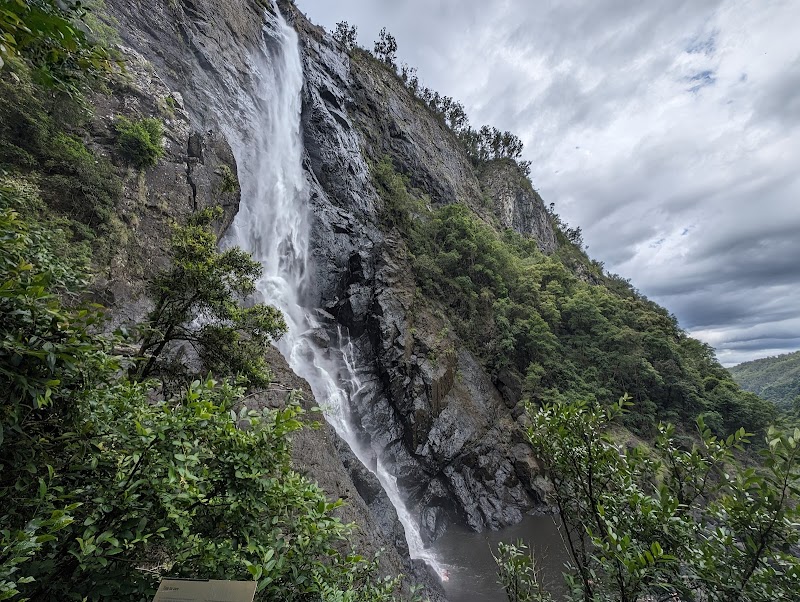
Whale Wonder and Coastal Adventure: Exploring Forster Whale Festival
The Forster Whale Festival celebrates the majestic humpback migration with immersive whale watching, coastal walks, and cultural experiences. This event combines adventure and education, offering something for casual viewers and seasoned hikers alike along the wild New South Wales coastline.
Wear Sturdy Shoes
The coastal trails around Forster have mixed terrain, including rocky and gravel sections. Sturdy, comfortable shoes ensure better footing and protect against sharp stones.
Stay Hydrated
Spring in Forster can bring warm, dry weather, especially during midday hikes. Carry at least 1.5 liters of water to stay hydrated during longer walks.
Use Binoculars for Whale Spotting
Binoculars increase your chances of spotting distant whale spouts and tails beyond the shoreline, enhancing your experience without disturbing wildlife.
Plan Early or Late Day Hikes
The coastal paths are cooler and less crowded during mornings and late afternoons, providing better light and cooler temps for hiking and photography.
Whale Wonder and Coastal Adventure: Exploring Forster Whale Festival
Every year, the coastal town of Forster in New South Wales turns into a vibrant hub of marine celebration during the Forster Whale Festival. This event draws visitors eager to witness the mighty humpbacks as they push past the shores on their northern migration. The festival is more than just whale watching—it's an active engagement with the ocean’s pulse, blending guided tours, cultural events, and outdoor adventures that highlight the region’s natural heritage.
Forster’s rugged coastline and sheltered bays provide prime vantage points. The surrounding environment—a combination of forested walking trails and ocean bluffs—invites visitors to explore while remaining grounded in practical hiking. Trails vary from quiet nature strolls to moderately challenging paths where you can drink in expansive seascapes and the salted breeze that dares you forward.
The festival runs over several days, typically in late September to early October, timed perfectly with the height of whale migration. It features boat tours, coastal hikes, educational talks, and local food markets, transforming the town into an accessible adventure playground. For those on foot, the nearby coastal walk from Forster to Tuncurry offers a 6.5-kilometer path with minimal elevation gain but maximum sensory rewards: the slap of waves against rocky shores, the bold cries of seabirds, and distant whale spouts punctuating the horizon.
Preparation is vital. Comfortable, sturdy footwear is non-negotiable as some paths encounter loose gravel and irregular terrain. Hydration is crucial in spring’s warming sun, especially for optic-focused adventures like whale spotting where patience meets vitality. Early morning or late afternoon hikes provide cooler temperatures and softer light for photography, while the midday heat often urges an ocean-side break.
The Forster Whale Festival isn’t just an event; it’s a seasonal clash where sea and land demand respect and attentiveness. Adventure here means attuning to nature’s rhythm—watching for shifting tides, observing wildlife patterns, and pacing yourself through trails that challenge but don’t overwhelm. With every whale sighting and every step along the coast, you engage with a landscape fiercely itself.
Whether you’re a casual observer or a seasoned explorer, the festival offers an inviting balance of excitement and accessibility. It delivers more than the thrill of spotting whales—it provides a gateway into understanding a vital marine corridor and embracing the raw beauty of Forster’s coastal wilderness.
Nearby Trips
All Adventures
Boat Charters
Water Activities
Adventures near Forster, New South Wales
Discover the unique and memorable adventures that make Forster, New South Wales special.
Frequently Asked Questions
When is the best time to see whales during the Forster Whale Festival?
The peak period is late September to early October, aligning with the northward migration of humpback whales. Early mornings and late afternoons often provide the clearest views offshore.
Are the coastal trails suitable for families with children?
Many paths are family-friendly, especially the Toorale Coastal Walk, which offers mostly gentle terrain. However, some sections include rocky spots where supervision is advised.
Can I join ocean-based whale watching tours during the festival?
Yes, several operators offer guided boat tours from Forster, providing closer encounters with whales. Booking in advance is recommended as tours fill quickly during the festival.
What wildlife, besides whales, might I encounter during the festival?
Expect to see sea eagles, dolphins, seals, and a variety of coastal birdlife, making the festival a broader opportunity for wildlife observation.
Is the Forster Whale Festival environmentally conscious?
The festival emphasizes sustainable practices, encouraging responsible wildlife viewing and reducing plastic usage to protect marine habitats.
Are there lesser-known viewpoints for whale watching around Forster?
Yes, local favorites include Boomerang Headland and the western side of Bennetts Head, where fewer crowds gather but views remain expansive.
Recommended Gear
Hiking Shoes
Provides support and protection on rocky and uneven coastal trails.
Water Bottle or Hydration Pack
Necessary to stay hydrated during warmer spring days and extended walks.
Binoculars
Enhances whale watching and spotting distant wildlife along the coast.
Sun Protection (hat, sunscreen)
The sun can be strong in spring, making sun protection critical on exposed paths.
Local Insights
Hidden Gems
- "Bennetts Head cliff paths for secluded ocean views"
- "Wallis Lake Lookout for panoramic water vistas beyond the usual points"
Wildlife
- "Humpback whales"
- "Dolphins"
- "White-bellied sea eagles"
- "Australian fur seals"
History
"Forster developed as a fishing village and port with rich Indigenous heritage from the Worimi people, whose cultural connection to sea and land is honored during festival events."
